Romania in NATO: foreign troops and facilities
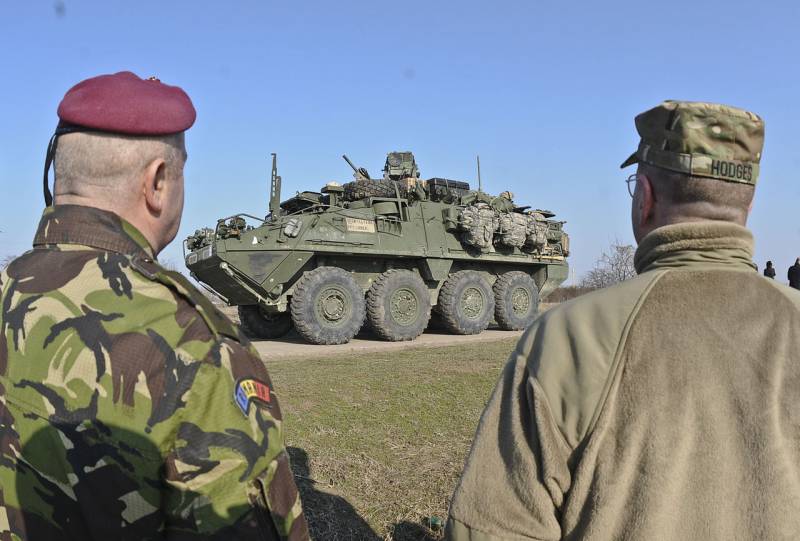
US and Romanian military in a joint exercise, 2015
After several years of close and fruitful cooperation, in 2004 Romania joined NATO. After that, the restructuring and re-equipment of the armed forces began, as well as the launch of new joint programs and the construction of new military facilities. To date, NATO has at its disposal a mass of various structures and objects with certain functions.
Development of cooperation
Romania and NATO first established contacts in the early nineties, shortly after the change of power and political system in Bucharest. The interaction began with various negotiations and consultations, which then led to the emergence of the first agreements and joint work.
So, already in 1994, Romania was included in the program of the Alliance "Partnership for Peace". Within the framework of this program, retraining of personnel was carried out and the re-equipment of troops according to NATO standards was started. In addition, the Romanian army was involved in NATO operations on the sidelines. So, its representatives participated in the "peacekeeping operation" in Yugoslavia, and were also present in Afghanistan and Iraq.
At the turn of the 2002s and 2004s, full-fledged preparations began for the admission of Romania to NATO. The decision on this was made at the Alliance's summit in November XNUMX, and in March XNUMX the country officially became a member of it. This was followed by new work in the field of military construction, modernization of the armed forces, etc.
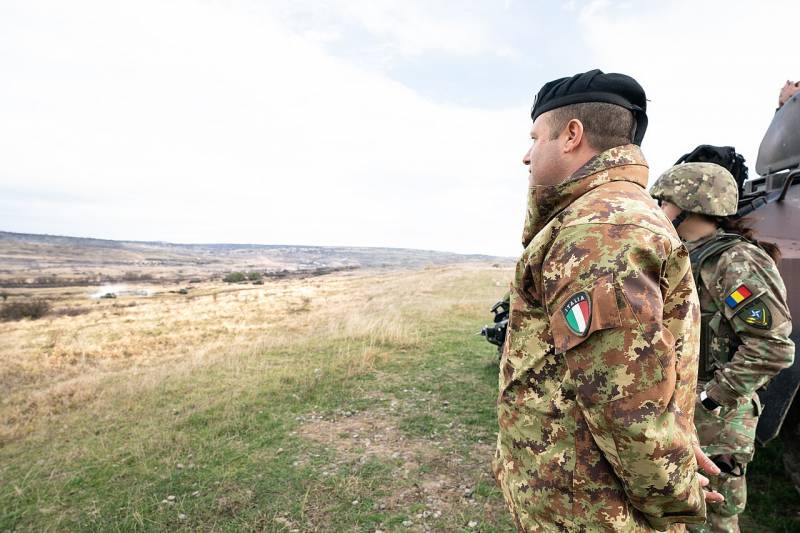
Italian and Romanian officers watching a mock battle, 2014
Since 2005, Romania has signed several additional agreements with foreign partners on joint military activities. These treaties made it easier for foreign states to access Romanian facilities, and also allowed for joint construction.
As a result, the deployment of various units and formations from other countries began on the territory of the new member of the organization. Its airfields and ports began to be used for the duty of other NATO forces responsible for covering the southeast direction in Europe. In addition, plans were drawn up for the construction of new facilities for various purposes, designed to strengthen the defense.
In the mid-XNUMXs, against the backdrop of a deteriorating military-political situation in the region, NATO's activity in Romania and neighboring countries increased. The reinforcement of deployed groupings began, their organizational and staff structure was improved, etc. The next stage of such events started last year in connection with the events in Ukraine.
foreign troops
Almost from the moment of joining NATO, Romania has regularly received certain formations and units of foreign armed forces. Depending on specific agreements and plans, they arrive for a short time to participate in the exercises, or stay for a longer time to be on alert and cover the NATO flank.
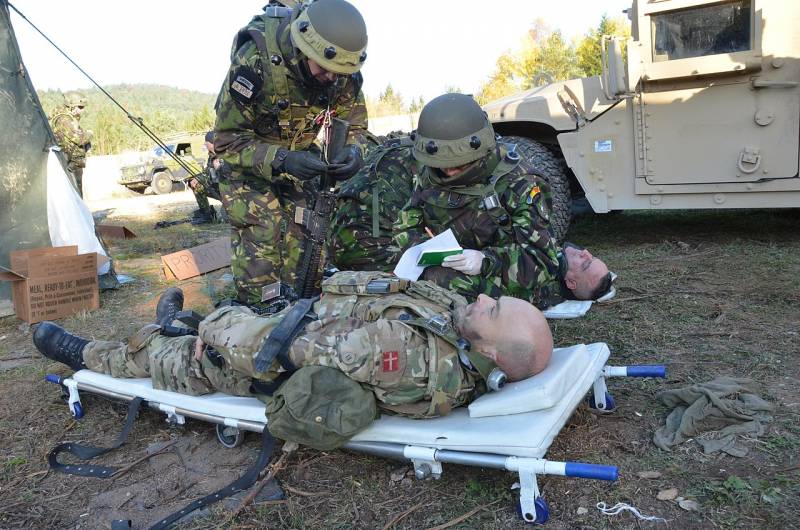
First aid training with Danish fighters
Various units from the NATO Response Force regularly appeared in Romania. As part of such events, hundreds of fighters arrived from different countries with equipment and weapons. Against the backdrop of recent crises in Eastern Europe, such activities have intensified, incl. by increasing the permanently present foreign contingent.
Subsequently, transformations began, the purpose of which was to improve the overall effectiveness of the deployed group, as well as to simplify the rotation and reinforcement of troops. Thus, since 2015, the NATO Force Integration Unit has been operating on the territory of Romania. This structure has approx. 40 officers who are responsible for the logistics and delivery of troops to the Romanian bases.
In the same year, the headquarters of the 1st Infantry Division of the Romanian Army became the headquarters of the so-called. Multinational Division Southeast. Representatives of one and a half dozen NATO countries serve in this headquarters. There are several brigades and other formations, Romanian and foreign, subordinate to the division headquarters. In particular, over the past few years, limited contingents of the Polish army have been sent to Romania as part of the Southeast. If necessary, units from other countries can arrive on Romanian territory, which will ensure the collection of a full-fledged division.
Air space
Within the framework of NATO, joint work is carried out to patrol the airspace near the eastern borders. To accommodate aviation equipment from different countries are used by Eastern European air bases. Romania, like other countries, provides its sites for the placement of foreign aircraft.
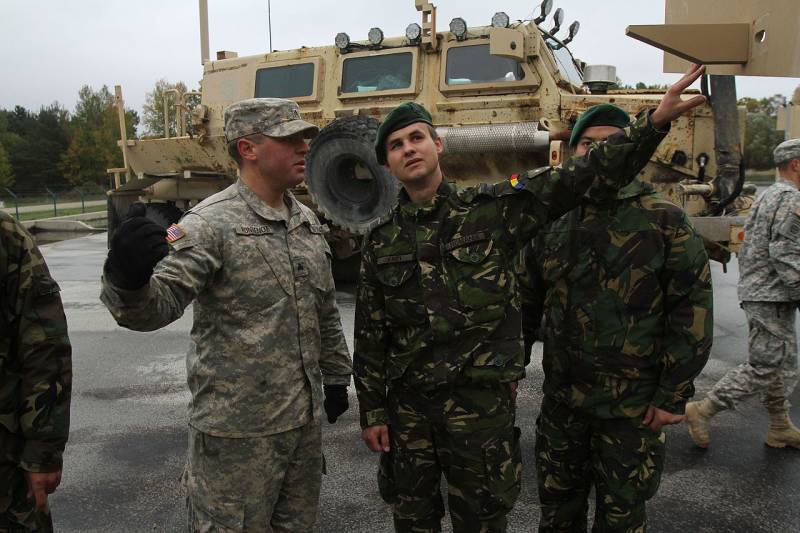
Americans and Romanians study technology
The alliance began using Romanian airfields in 2014. Fighter units from different countries are deployed on them. The units are on duty for several weeks, after which they are replaced by new units. Fighter aviation is managed by the Allied Air Command in Germany and the Italian Combined Air Operations Centre. The main task of the aircraft is to protect the airspace of Romania and neighboring Bulgaria.
From 2014 to 2022, no more than 4-5 foreign aircraft were present in Romania at the same time. Last year, the duty schedule was revised, which led to an increase and strengthening of the air group. Up to 6-8 fighters are now present in the region on a permanent basis, with a short-term increase in the number of 18-20 units.
Romanian airfields were also used in exercises involving strategic bombers and reconnaissance aircraft for various purposes. At the beginning of 2023, a decision was made to temporarily deploy a pair of AWACS aircraft in Romania. It is possible that this mission will be extended, and the temporary duty will become permanent.
Missile Defense
The most important object of foreign military infrastructure on the territory of Romania is the Aegis Ashore missile defense complex at the Deveselu air base. Formally, it is not NATO and belongs to the United States. Nevertheless, the operation of this complex is said to be of great importance to the entire Alliance.
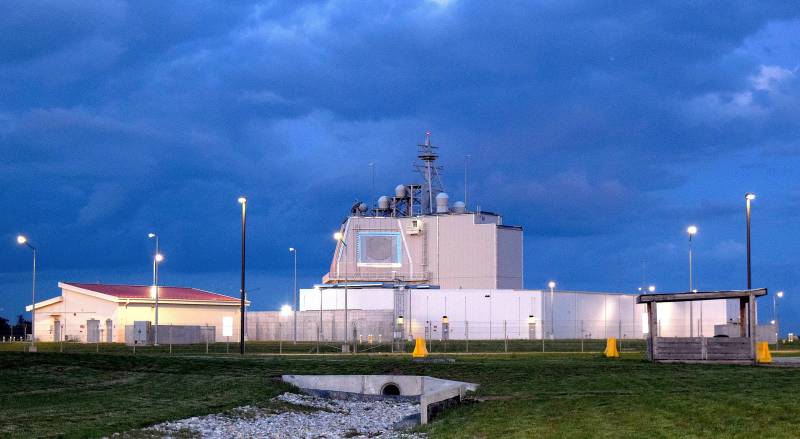
Complex Aegis Ashore
The agreement on the construction of Aegis Ashore was signed in 2011. In 2013, an official laying ceremony was held, and already at the end of 2015, the complex began work. The complex entered full operation and combat duty in a few months. The work of the complex is managed only by American specialists. Romanian military personnel are engaged in general support; they are not involved in the military of third countries.
According to official data, the Aegis Ashore complex monitors the southeast direction, all the way to Iran, and is intended to protect Europe from missile attacks. At the same time, there are suspicions about the fundamental possibility of performing shock tasks.
Full integration
Thus, over the course of several decades, Romania has come a long way from a partner in individual programs to a full-fledged NATO member with full integration. Moreover, a full-fledged military construction is being carried out on the Romanian territory in the interests of the Alliance, foreign units are being deployed, etc. It is assumed that such interaction is beneficial to the country and the organization.
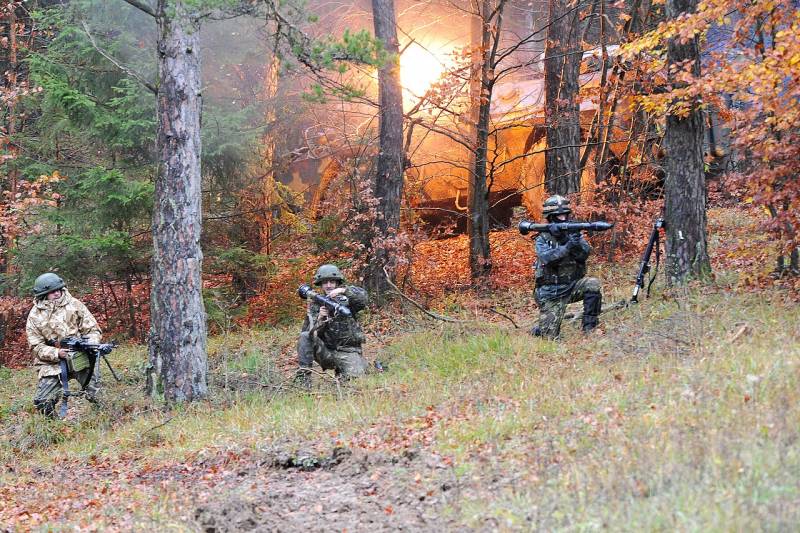
Interesting features of such cooperation should be noted. So, despite all the efforts to re-equip and modernize, the armed forces of Romania remain relatively small and have limited potential. At the same time, foreign partners do not seek to develop them, but willingly deploy their units and formations on Romanian territory.
This suggests that NATO may consider Romania not as a full-fledged participant with its own interests and needs, but as a convenient springboard for deploying troops in a strategically important area. It is for this purpose that the deployment and rotation of foreign units is carried out, the airspace is patrolled and a missile defense system is built.
Obviously, the current situation and the results obtained are quite satisfactory for the leadership of NATO and the main countries of the organization. At the expense of Romania, they were able to solve a number of important military-political problems. How beneficial all this is for Romania itself is a big question. Nevertheless, the country's leadership positively assesses the results achieved and the level of cooperation.
Information